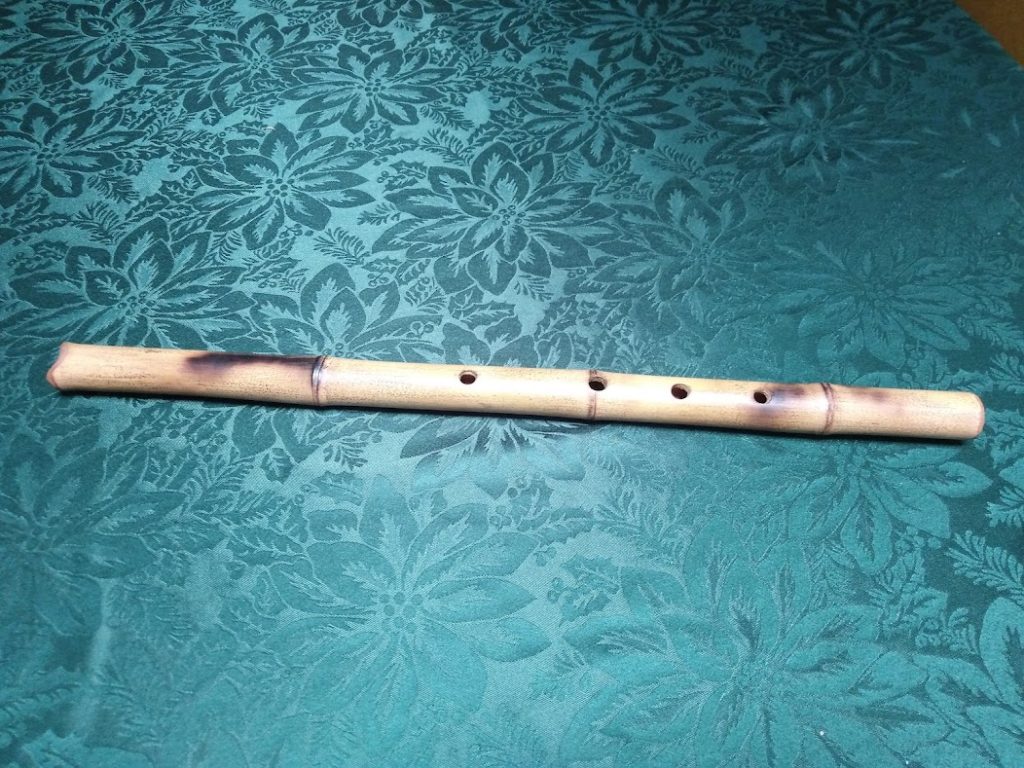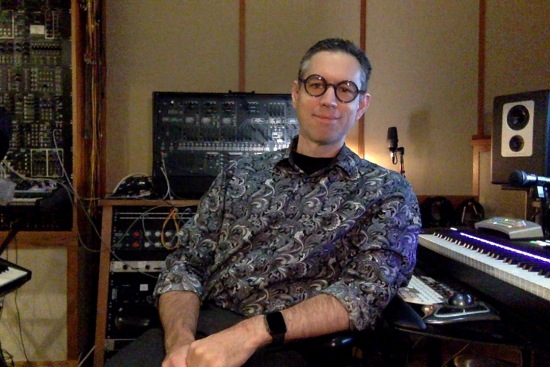
The story
Around 10 years ago, during a brief obsession with Anime soundtracks, I bought this instrument from a maker in Queensland, Australia. Unfortunately I never became particularly good at playing it, and having not had access to the instrument for many years I am also quite out of practice. Nonetheless, I decided to do what I could to sample it since the Shakuhachi is such a gorgeous-sounding instrument. The versatility is limited by my own playing ability, so you won’t be able to use it for Wagakki band covers, but I think it works quite well for some more calm, meditative melodies, and the poly version can create a nice, dreamy pad with some tweaking of the ADSR. The shakuhachi is an end-blown bamboo flute from Japan. The name is a cognate of a measurement ‘shaku’ – similar to 1 foot; and number ‘hachi’ – 8, in this case referring to 8 tenths; which together describe the typical length of the instrument – 1.8 shaku; around 54.54cm. It’s derived from the Chinese bamboo flute which was first introduced to Japan in the 7th Century. The third instrument in my ‘Winds of the World’ series from my collection of folk flutes.
Shakuhachi Demo
Reviews for Shakuhachi
- Sound
- Character
- Playability
- Inspiration
- GUI
Leave a review to let others know what you thought of the instrument!
...and then I was standing in a forest, in the mist...
Beautiful sound and as with Eamon's other instruments the breathiness and organic feel to the instrument is perfectly judged. Creates an amazing atmosphere as soon as you start to play. Has the same scripting options for Legato and Vibrato as on his other instruments which is great as they're super customisable. If you're into wind instruments this is another "must have" from Eamon.
An excellent wind
This is a wonderful little sakuhachi that has been sampled very well and also programmed nicely. It sounds awesome, with the minor exception that some might notice the sample looping once you let a single note ring for a while, especially after the "breathy" part ends.
The highlight on this instrument is the legato patch, which is an amazing feature to have. It's very well programmed to, and it comes with a bunch of options, which might be overwhelming and confusing to some, but in my opinion, options are always good.
The same thing goes to the Vibrato setting. It works really well and it's ridiculously customizable. I recommend binding the "Vibrato Amount" knob to a CC/Fader of your choice. Introducing vibrato at the right moment also seems to fix the looping issue in a very natural and creative way.
In case you want to have a polyphonic option, there is a separate patch for that, although I'd very much prefer a keyswitch, or just a simple button that disables legato instead. There is a "Bypass Legato", but it seems to bypass the settings instead of the actual articulation. Unfortunately the vibrato doesn't seem to be available there, so the looping issue might seem a little more noticeable.
All in all, it's a fantastic instrument that I highly recommend. It's very well done and if you program it well, it can do wonders!
Really useful instrument with some minor issues
The actual sound of this instrument is really great. It's breathy, sometimes squeaky and bursting with character. Like Eamon's other instruments you get so many controls in the GUI. You get all your basic controls along with the ability to effect the legato, vibrato and the sound of the breath. So much controllability for a free instrument. It sounds amazing drenched in reverb too. With the good stuff out of the way, here are my issues. Firstly, as mentioned by others, the looping of the samples is really obvious, especially cause the instrument is so characterful, so you hear the same little pitch flutter or squeak every few seconds. Maybe playing longer sustained notes would help with this. Secondly, maybe this is just an issue I'm having because i don't see it mentioned by anyone else but the legato seems to have an abrupt start and stop when going into the next note. I messed with some of the parameters and it helped a little but it still feels like its starting and stopping abruptly instead of smoothy transitioning into the next note. Also although the GUI has amazing control, it could be a little more intuitive or pleasing to look at. With all that said, this is still an amazing free instrument.
Legato Shakuhachi with Deep GUI options
This shakuhachi flute has some fantastic options in the GUI to control the legato parameters. It also has deep wind controller integration, which is really cool to see. I whipped out my ancient Yamaha BC-2 and had a go. I'd forgotten how much fun that is -- not to mention how completely geeky it looks!! Anyhow, there's a lot to the GUI here. The sound itself is well recorded and edited with three round robins and two dynamic layers. There are two major pitfalls of this library as I see it. First, the samples loop, and the loop points are really obvious and noticeable. You can mostly circumvent this problem by avoiding playing long notes. The second issue is that a big part of what makes Shakuhachi samples sound convincing is the many unique performance techniques which can be used such as bending the pitch, trills, grace notes, mordents, etc. However, you really need a shakuhachi player to pull that off, something Eamon freely admits he's not. That level of additional content honestly is a pretty big ask, and it's why Spitfire can still charge what it does for the Andy Findon libraries -- which are excellent, btw. This library is a worthy inclusion to the advent calendar! More wonderful goodies from Eamon and our friends at Piano Book!




